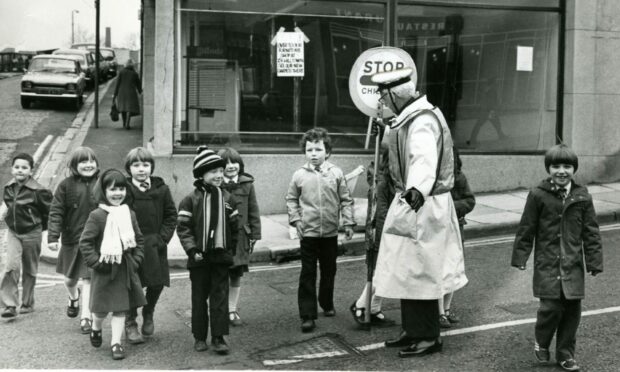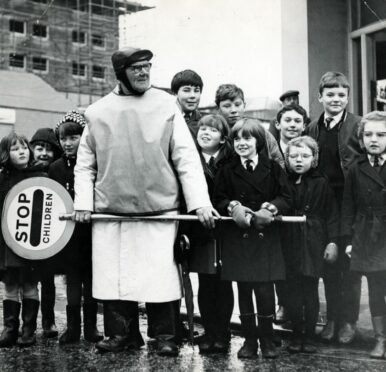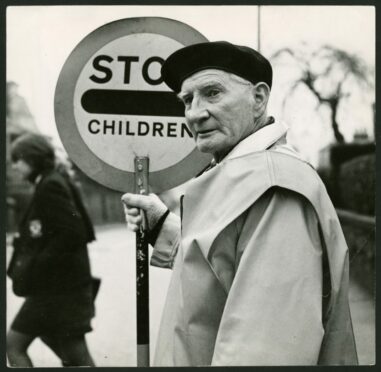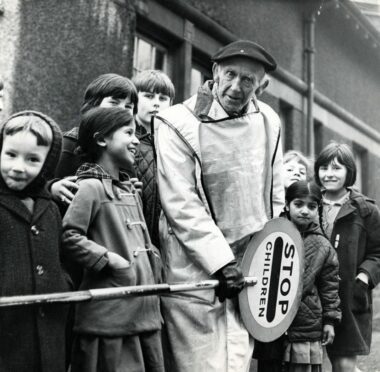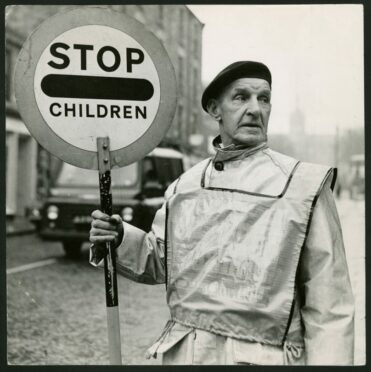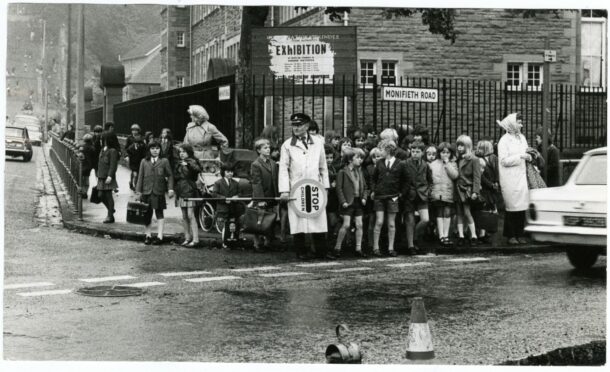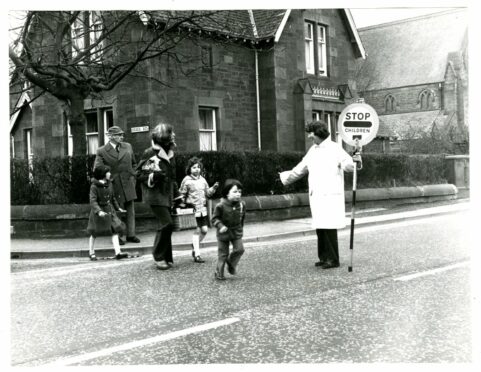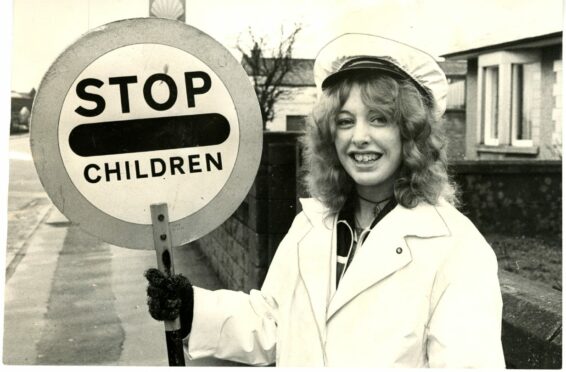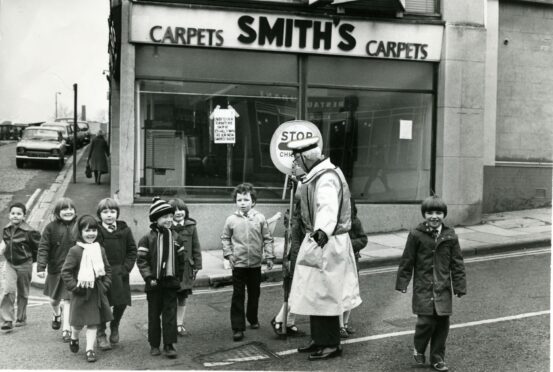Lollipop men and women have been shepherding Dundee schoolchildren to safety across busy roads with a wave and a smile for decades.
A familiar and cheerful stalwart of the school day, crossing patrollers play an important role at the heart of our communities.
Many Dundonians will have fond memories of the lollipop men and women, often unsung heroes, who ensured they had a safe passage to school across the increasingly busy city streets.
Crossing patrollers first appeared on Britain’s streets in the 1950s, but it wasn’t until the following decade the distinctive ‘lollipop’ sign was introduced.
The School Crossing Patrol Act (1953) was introduced across the nation giving patrollers the power to stop traffic officially – those drivers who refused faced a £5 fine.
Patrollers in Dundee also said their duties were not only to escort youngsters to their destinations safely, but also teach them the Green Cross Code to ‘stop, look and listen’.
Dundee’s lollipop men were often elderly or retired men who said the youngsters kept them “young at heart”.
And they were a welcome sight for Dundee’s mums, many of whom had raised concerns and run campaigns about road safety.
And by 1987, there were 213 manned crossings in Tayside; 104 in Dundee, 54 in Perth and Kinross and 52 in Angus.
When lollipop men and women first hit the streets they wore white coats, yellow armbands and peaked caps.
The more familiar, reflective uniform didn’t arrive in Dundee until the 1980s.
They were introduced thanks to the campaigning of lollipop lady Eileen Alexander of the Douglas Primary School patrol, who was concerned patrollers weren’t visible enough in poor weather.
She said: “I love my job but have been worried for a long time about helping children across the road and I felt drivers could not see me clearly, especially when I have to cross from behind parked cars.”
Parents’ fears returned when there was an “acute” shortage of lollipop men and women in Perth in the late 70s and early 80s.
An advertising campaign failed to fill vacancies for two regular and eight standby patrollers needed for the region.
Things reached crisis point at Oakbank Primary School when the head teacher found himself having to man the busy crossing.
Dundee mums protested about the “menace” of heavy traffic on the city streets when schools went back after the summer in 1974.
Lollipop man Alfred Lever single-handedly covered three roads in the vicinity of the Eastern School in Broughty Ferry.
Three local mums said although he was doing his best there had been near misses on St Vincent Street, Whinny Brae and Queen Street.
Rush hour in Invergowrie was a lot more subdued than Dundee, but the lollipop lady was just as important to help youngsters across Main Street.
Former pupils of Invergowrie Primary School will remember skipping across the road under the care of lollipop lady Mrs McCabe, who retired in 1978.
Moira Neil was Dundee’s youngest ever lollipop lady when she took up the baton in January 1981.
At just 16 years old, she wasn’t that much older than some of the pupils she helped across the road.
A smiling presence in the Monifieth area of the city, Moira escorted the children of Grange Primary School to safety across Ferry Road at its junction with Grange Road.
And at the other end of the age spectrum, in 1990, another crossing patroller – James Garvie – made the headlines for being the oldest ‘pupil’ at Morgan Academy.
Mr Garvie was the lollipop man for the school, seeing pupils over the busy Pitkerro Road for four years, but he was also sitting his O-grade in maths so he could help his grand-daughter Jennifer with her homework.
The envy of other pupils, he was allowed to leave maths class early at the end of the day for his lollipop man duties.
If you enjoyed this, you might like:
